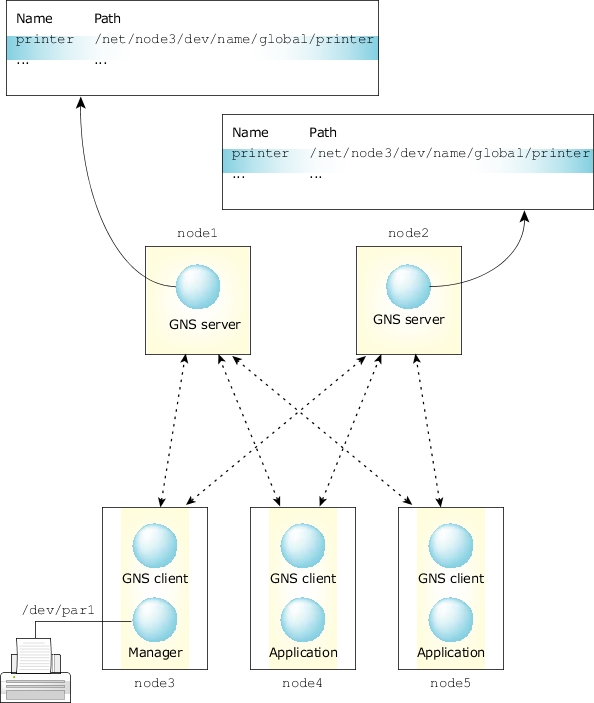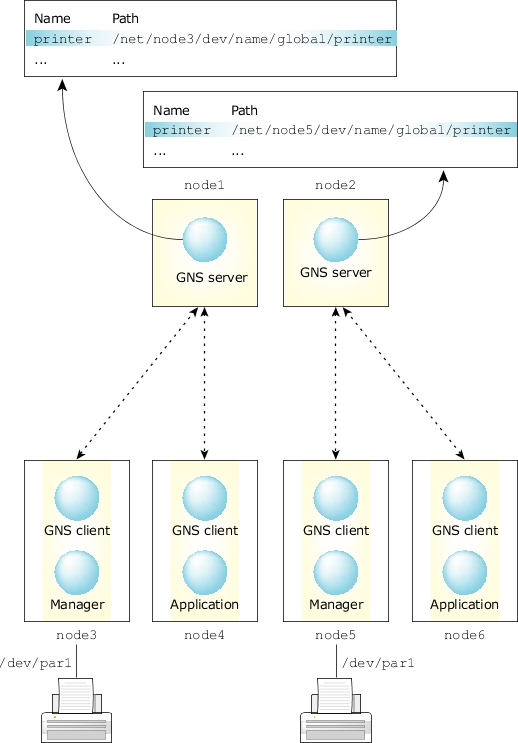When you deploy the gns processes on your network, you start the gns process in two modes: server and client. You need at least one gns process running as a server on one node, and you can have one or more gns clients running on the remaining nodes. The role of the gns server process is to maintain the database that stores the advertised services. The role of a client gns process is to relay requests from its node to the gns server process on the other node. A gns process must be running on each node that wishes to access GNS.
It's possible to start multiple global name service managers (gns process) in server mode on different nodes. You can deploy server-mode gns processes in two ways: as redundant servers, or as servers that handle two or more different global domains.
In the first scenario, you have two or more servers with identical database information. The gns client processes are started with contact information for both servers. Operations are then sent to all gns server processes. The gns servers, however, don't communicate with each other. This means that if an application on one gns server node wants to register a global service, another gns server can't do it. This doesn't affect other applications on the network, because when they connect to that service, both GNS servers are contacted.
 Figure 1. A redundant GNS setup.
Figure 1. A redundant GNS setup.You don't have to start all redundant gns servers at the same time. You can start one gns server process first, and then start a second gns server process at a later time. In this case, use the special option -s backup_server on the second gns server process to make it download the current service database from another node that's already running the gns server process. When you do this, the clients connected to the first node (that's already running the gns server process) are notified of the existence of the other server.
In the second scenario, you maintain more than one global domain. For example, assume you have two nodes, each running a gns server process. You also have a client node that's running a gns client process and is connecting to one of the servers. A different client node connects to the other server. Each server node has unique services registered by each client. A client connected to server node1 can't see the service registered on the server node2.
 Figure 2. Separate global domains.
Figure 2. Separate global domains.What is demonstrated in each scenario is that it's the client that determines whether a server is acting as a redundant server or not. If a client is configured to connect to two or more servers, then those servers are redundant servers for that client's services. The client can see the services that exist on those servers, and it registers its services with those servers.
There's no limit to the number of server mode gns processes that can be run on the network. Increasing the number of servers, however, in a redundant environment can increase network use and make gns function calls such as name_attach() more expensive as clients send requests to each server that exists in its configuration. It's recommended that you run only as many gns servers in a redundant configuration as your system design requires and no more than that.
For more information, see gns documentation in the Utilities Reference.